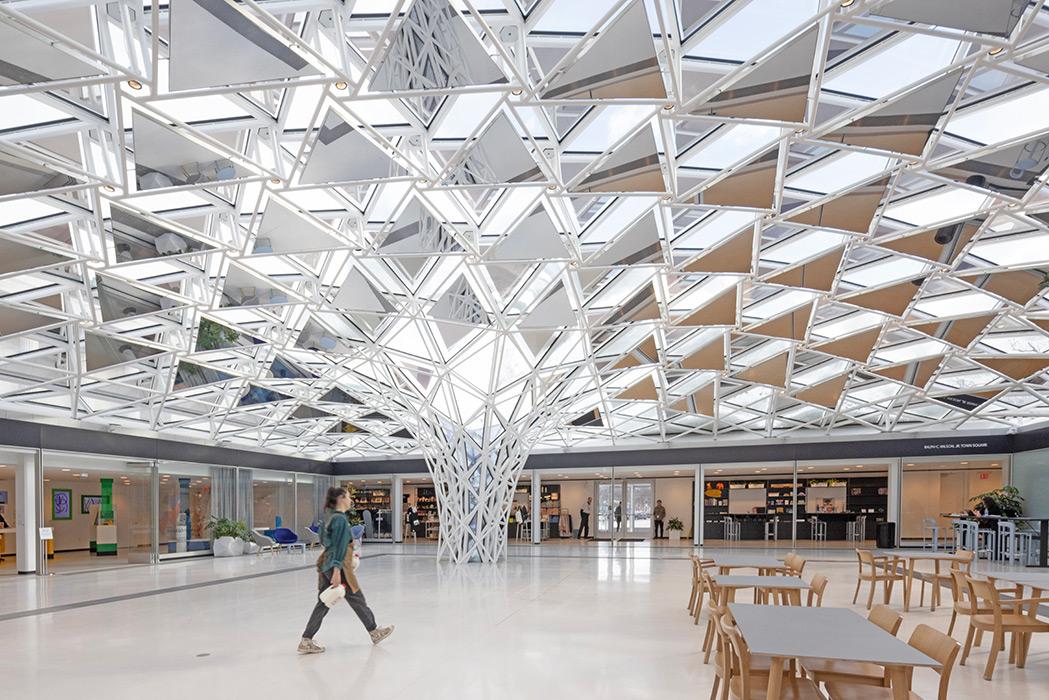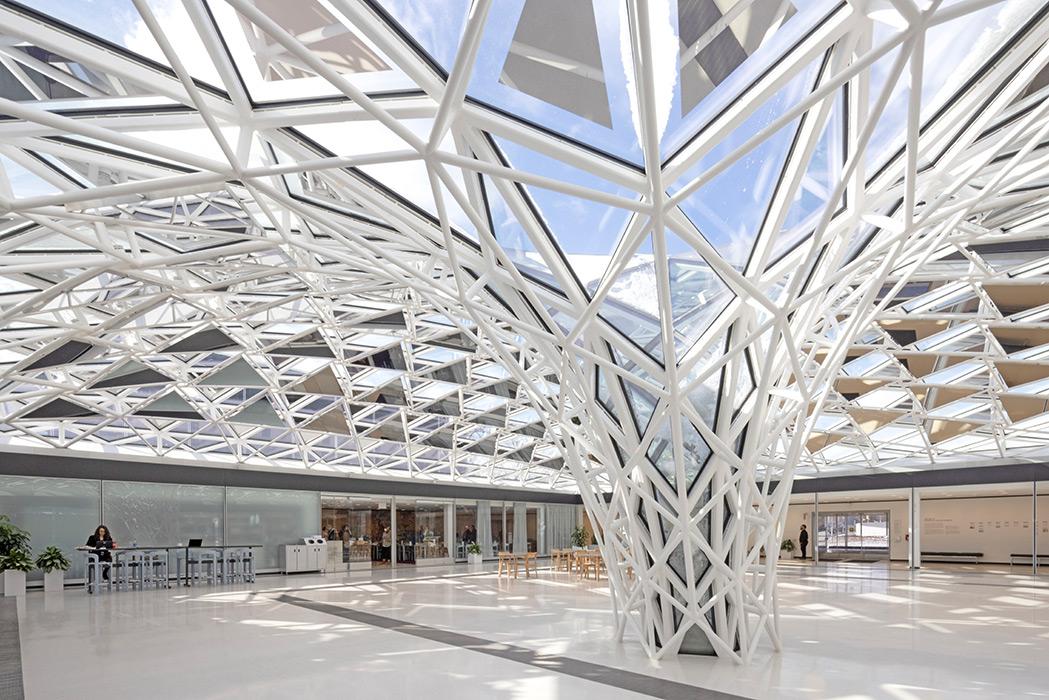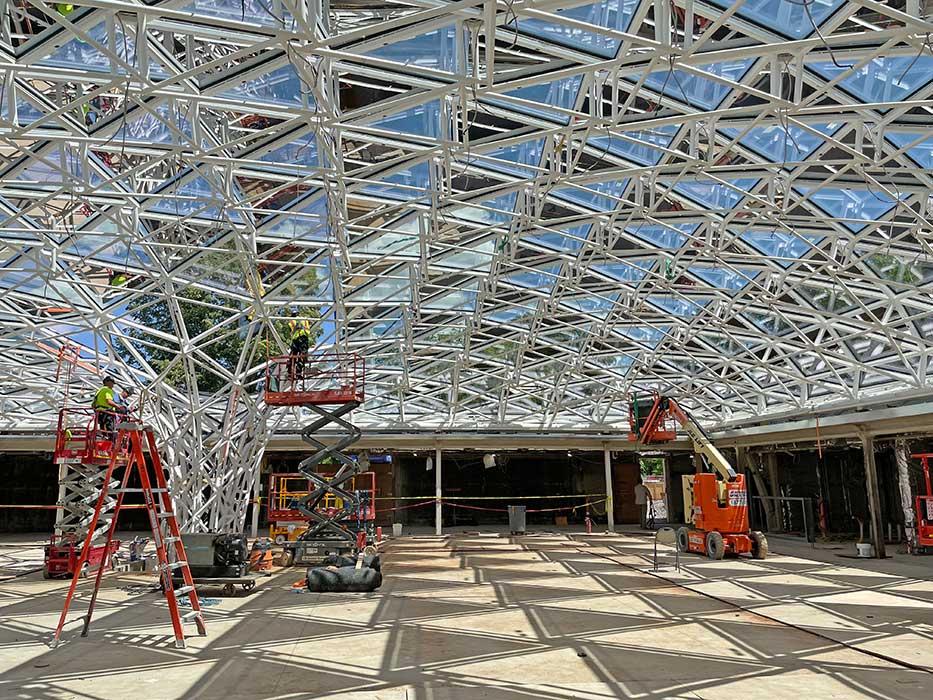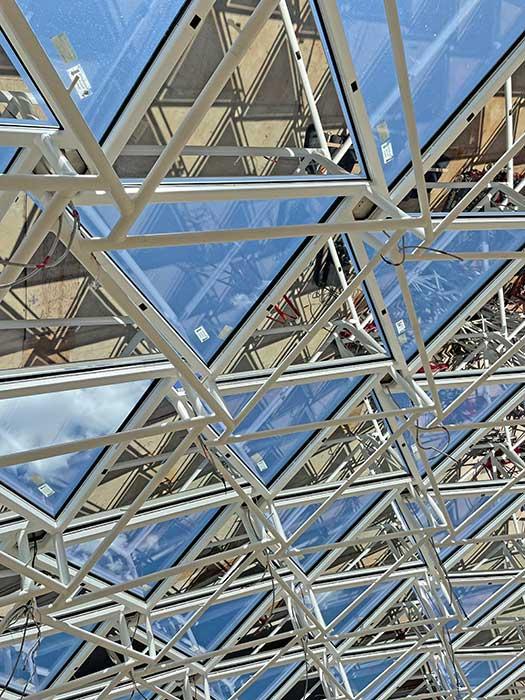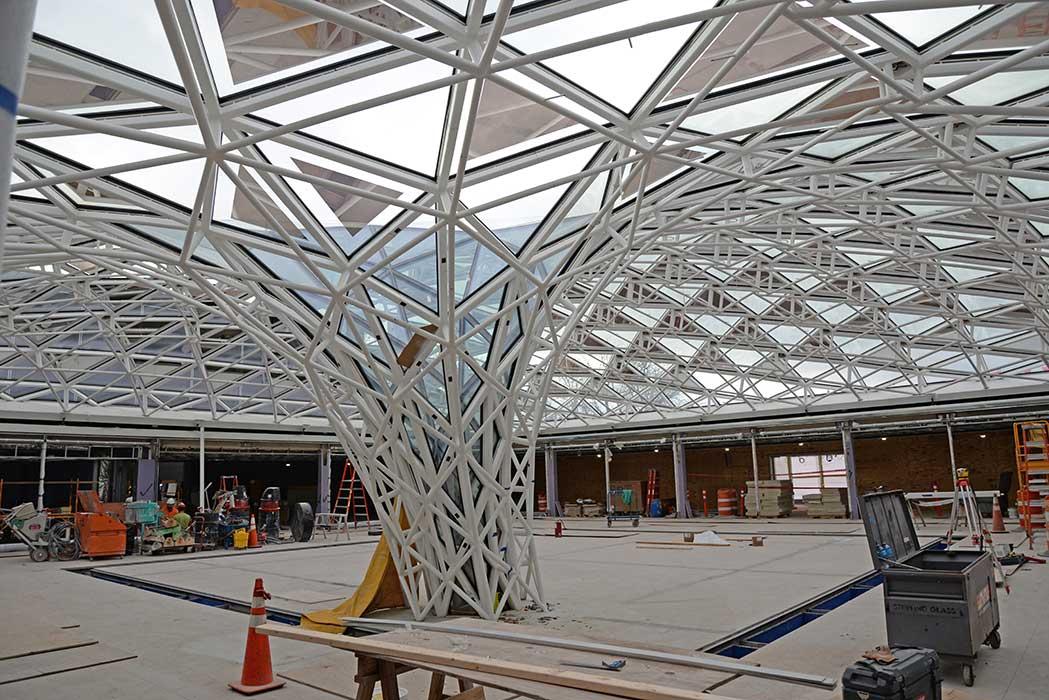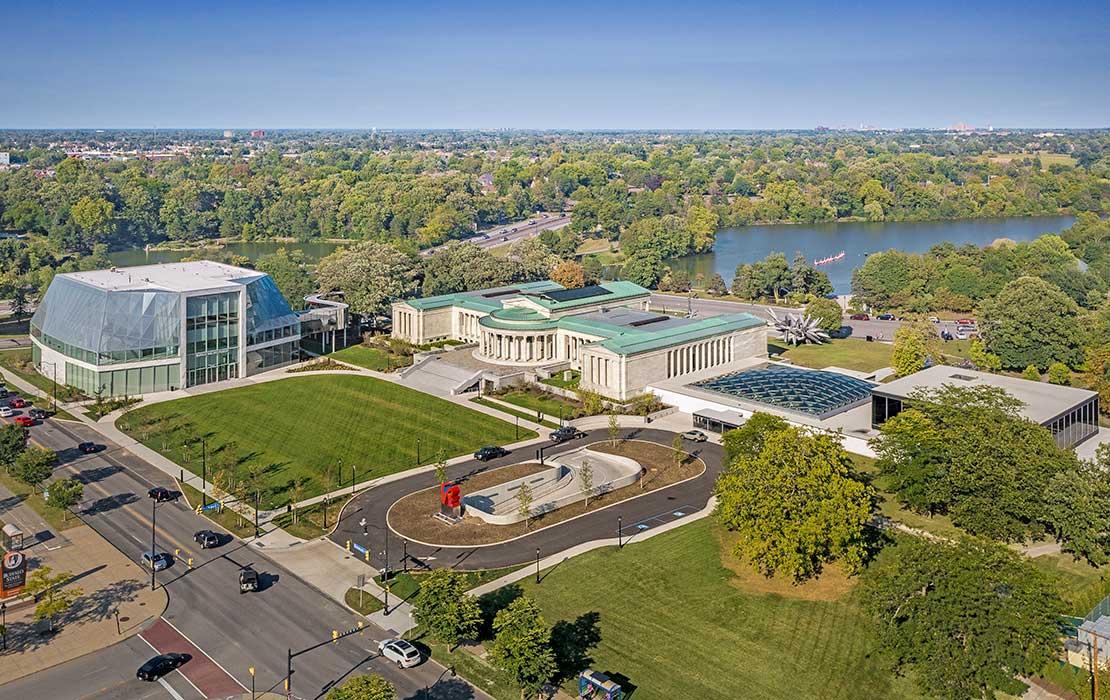
Buffalo AKG Art Museum - Common Sky Art Gallery Extension
A work of art and a functional canopy that encloses the existing courtyard of the Seymour H. Knox Building, transforming the space into AKG’s Town Square.
Project Details
NCSEA, Structural Engineering Excellence Awards, Other Structures, 2023
ACEC New York, Engineering Excellence Awards, Diamond Award - Structural Systems, 2025
ACEC, Engineering Excellence Awards, Award of Merit - Structural Systems, 2025
US Glass Magazine, Excellence in Architectural Glass Design Awards- Overhead Glazing, 2025
Overview
The Buffalo AKG Art Museum, originally known as the Albright-Knox Art Gallery, recently underwent an ambitious $230 million campus redevelopment, doubling its exhibition space and restoring its existing structures.
Inspired by the weather of Buffalo and the lush surroundings, Common Sky is a striking canopy that encloses the Albright-Knox Gallery’s Town Square. The canopy reaches down to the ground at a single point of support – maintaining the asymmetry of the space. This funnel-like column marks the spot where the lone tree, planted in the sixties, stood – providing a memorial to what came before. It also creates a connection to the outside by allowing nature to extend into the courtyard through its hollow trunk, where rain can fall and snow can collect in the winter.
Our firm, in collaboration with ArtEngineering GmbH, provided structural and façade engineering services and served as the structural engineer of record for this undulating canopy of glass and mirrors addition to the Albright-Knox Art Gallery complex.
Highlights
- The 94-ft x 92-ft x 23-ft tall canopy features a double-layered, curved shell roof composed of AESS hollow steel sections. The outer layer is made up of square and rectangular hollow sections and supports the cladding glass panels. The inner layer is made up of circular hollow sections, and supports the triangular, suspended mirror panels.
- The canopy structure is composed of three main elements: a perimeter ring truss, a funnel-shaped column, and the two-layer field structure in between. The ring truss composed of circular hollow sections runs along the outline of the courtyard and resists the horizontal thrust forces from the canopy. The inner chord of the truss is supported on spherical slide bearings installed atop the existing courtyard columns at 15 locations and transfer mainly vertical loads.
- Two additional connections are made to shear walls of the adjacent auditorium at the corners to transfer lateral forces and provide torsional stability to the roof. The funnel-shaped column near the north-east corner of the courtyard is supported on a new piled-footing and provides gravity, lateral and torsional support to the roof. The ring truss and funnel follow a traditional triangulated geometry, whereas the field structure bridging between the two follows a reciprocal pattern made up of triangles and hexagons. The inner and outer layers are connected by circular hollow sections at alternating corners of each hexagon.
- Overcoming the intricate challenges in analysis, design, and fabrication demanded a collective effort, showcasing the team’s exceptional problem-solving and expertise, including:
- The canopy’s asymmetrical geometry and reciprocal hexagon pattern yield unique node configurations with varying slopes, angles, and offsets. The design and fabrication process involved the design and detailing of the light-weight roof structure for heavy snow loading, modeling and analysis of the global structures and unique nodes, and fabrication/erection with tight tolerances.
- Multiple analysis models were employed to verify sections, local and global buckling safety, as well as local node and weld stress and strains. Analysis models with frame elements only, as well as hybrid models incorporating shell elements to represent highly stressed nodes were utilized. Partial, full-height vertical and horizontal internal stiffeners were provided at nodes identified as part of the analysis.










